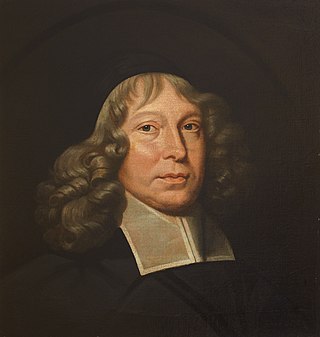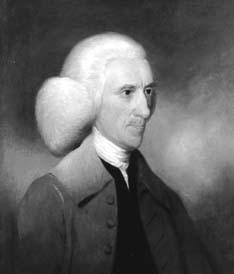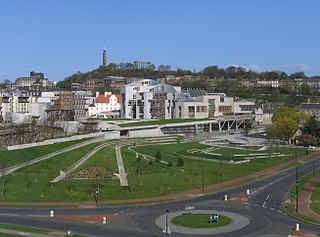
Thomas Graham was a British chemist known for his pioneering work in dialysis and the diffusion of gases. He is regarded as one of the founders of colloid chemistry.

The Scottish Enlightenment was the period in 18th- and early-19th-century Scotland characterised by an outpouring of intellectual and scientific accomplishments. By the eighteenth century, Scotland had a network of parish schools in the Scottish Lowlands and five universities. The Enlightenment culture was based on close readings of new books, and intense discussions which took place daily at such intellectual gathering places in Edinburgh as The Select Society and, later, The Poker Club, as well as within Scotland's ancient universities.
This article contains information about the literary events and publications of 1742.

Thomas Campbell was a Scottish poet. He was a founder and the first President of the Clarence Club and a co-founder of the Literary Association of the Friends of Poland; he was also one of the initiators of a plan to found what became University College London. In 1799 he wrote "The Pleasures of Hope", a traditional 18th-century didactic poem in heroic couplets. He also produced several patriotic war songs— "Ye Mariners of England", "The Soldier's Dream", "Hohenlinden" and, in 1801, "The Battle of the Baltic", but was no less at home in delicate lyrics such as "At Love's Beginning".

Ellen Anderson Gholson Glasgow was an American novelist who won the Pulitzer Prize for the Novel in 1942 for her novel In This Our Life. She published 20 novels, as well as short stories, to critical acclaim. A lifelong Virginian, Glasgow portrayed the changing world of the contemporary South in a realistic manner, differing from the idealistic escapism that characterized Southern literature after Reconstruction.

John Anderson was a Scottish natural philosopher and liberal educator at the forefront of the application of science to technology in the industrial revolution, and of the education and advancement of working men and women. He was a joint founder of the Royal Society of Edinburgh, and was the posthumous founder of Anderson's College, which ultimately evolved into the University of Strathclyde.

James Young FRS FRSE FCS DL LLD was a Scottish chemist best known for his method of distilling paraffin from coal and oil shales. He is often referred to as Paraffin Young.

Samuel Rutherford was a Scottish Presbyterian pastor and theologian and one of the Scottish Commissioners to the Westminster Assembly.
Andrew Foulis was a Scottish printer, brother of Robert Foulis. They worked in partnership as printers to the University of Glasgow publishing many books in Latin and Greek.

Alexander Wilson was a Scottish surgeon, type-founder, astronomer, mathematician and meteorologist. He was the first scientist to use kites in meteorological investigations.

The Royal Philosophical Society of Glasgow is a learned society established in 1802 "for the improvement of the Arts and Sciences" in the city of Glasgow, Scotland. It runs a programme of lectures, starting its 220th Series in October 2021. The Society formerly owned a building on Bath Street, but since 1994 has been accommodated within the University of Strathclyde.

Robert Foulis was a Scottish printer and publisher.

William Richardson FRSE was a Scottish classicist and literary scholar. In 1783 he was a joint founder of the Royal Society of Edinburgh.

The Memorial Gates at the University of Glasgow were erected in 1952 as a celebration of the university's quincentenary, or five hundredth anniversary. They form a portal through the University Avenue side of the perimeter fence around the university's current site on Gilmorehill. They stand before the Hunter memorial and Hunterian Museum, on the other side of the John McIntyre Building from the Main Gate. The large gates in the centre are generally locked, although the small pedestrian gates to the left and right are opened during the day. The gates bear the names of thirty distinguished figures associated with the university. The gates are protected as a category B listed building.

The architecture of Scotland includes all human building within the modern borders of Scotland, from the Neolithic era to the present day. The earliest surviving houses go back around 9500 years, and the first villages 6000 years: Skara Brae on the Mainland of Orkney being the earliest preserved example in Europe. Crannogs, roundhouses, each built on an artificial island, date from the Bronze Age and stone buildings called Atlantic roundhouses and larger earthwork hill forts from the Iron Age. The arrival of the Romans from about 71 AD led to the creation of forts like that at Trimontium, and a continuous fortification between the Firth of Forth and the Firth of Clyde known as the Antonine Wall, built in the second century AD. Beyond Roman influence, there is evidence of wheelhouses and underground souterrains. After the departure of the Romans there were a series of nucleated hill forts, often utilising major geographical features, as at Dunadd and Dunbarton.

The Institution of Engineers and Shipbuilders in Scotland (IESIS) is a multi-disciplinary professional body and learned society, founded in Scotland, for professional engineers in all disciplines and for those associated with or taking an interest in their work. Its main activities are an annual series of evening talks on engineering, open to all, and a range of school events aimed at encouraging young people to consider engineering careers.
Events from the year 1817 in Scotland.
David Douglas FRSE FSA was a Scottish publisher in the 19th century. He was publisher of works by authors including John Stuart Blackie and Dr John Brown. In later life he formed half of the successful Edinburgh publishing business Edmonston & Douglas. The latter were responsible for a highly popular set of animal prints aimed at children. His final partnership was called Douglas & Foulis.

The Ramshorn Cemetery is a cemetery in Scotland and one of Glasgow's older burial grounds, located within the Merchant City district, and along with its accompanying church, is owned by the University of Strathclyde. It has had various names, both official and unofficial: North West Parish Kirkyard; St David's Kirkyard; and Ramshorn and Blackfriars. The latter name tells of its link to Blackfriars Church, linking in turn to the pre-Reformation connection to the Blackfriars Monastery in Glasgow.
William Rae Wilson (1772–1849) was a Scottish lawyer, landowner and travel writer.













